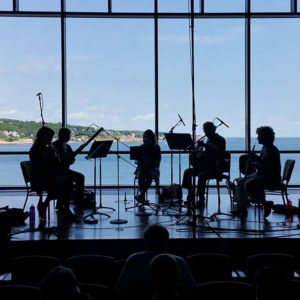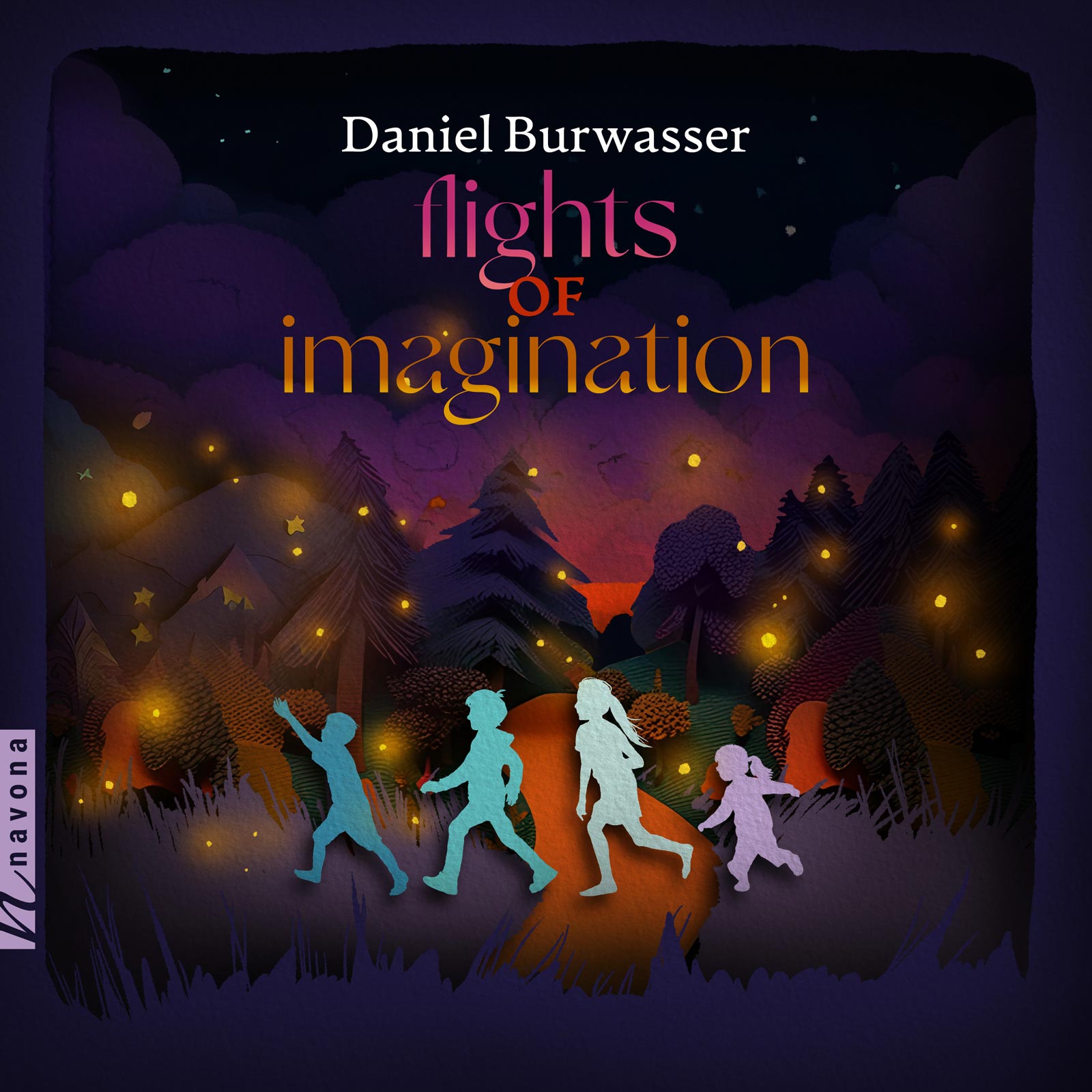Flights of Imagination
Daniel Burwasser composer
Daniel Burwasser’s music has been praised as accessible, communicative, and imaginative, descriptors encapsulated in the recordings of FLIGHTS OF IMAGINATION, a comprehensive release including some of Burwasser’s most beloved works. Burwasser provides no shortage of musical variety; the childlike wonder of Catching Fireflies is paired with the rhythmic, jubilant, and occasionally mystical qualities of Whirlwind, Flux, and Puck’s Game, while A Well-Traveled Road is a tumultuous and lively musical journey through lush, overflowing fields of orchestration. There is undoubtedly something for every musical ear in the works of Daniel Burwasser, and in FLIGHTS OF IMAGINATION, listeners will be well-met in finding it.
Listen
Track Listing & Credits
| # | Title | Composer | Performer | |
|---|---|---|---|---|
| 01 | Catching Fireflies | Daniel Burwasser | Seattle Symphony Orchestra | Gerard Schwarz, conductor | 8:31 |
| 02 | Whirlwind: I. Quarter Note = 84 | Daniel Burwasser | Arcadian Winds | Vanessa Holroyd, flute; Mark Miller, clarinet; Jane Harrison, oboe; Laura Carter, french horn; Janet Underhill, bassoon | 1:54 |
| 03 | Whirlwind: II. Quarter Note = 70 | Daniel Burwasser | Arcadian Winds | Vanessa Holroyd, flute; Mark Miller, clarinet; Jane Harrison, oboe; Laura Carter, french horn; Janet Underhill, bassoon | 4:17 |
| 04 | Whirlwind: III. Dotted quarter Note = 100 | Daniel Burwasser | Arcadian Winds | Vanessa Holroyd, flute; Mark Miller, clarinet; Jane Harrison, oboe; Laura Carter, french horn; Janet Underhill, bassoon | 2:23 |
| 05 | Flux | Daniel Burwasser | Concordia Orchestra | Marin Alsop, conductor | 10:01 |
| 06 | A Well-Traveled Road | Daniel Burwasser | The Slovak Radio Symphony Orchestra | Robert Stankovsky, conductor | 11:27 |
| 07 | Puck's Game | Daniel Burwasser | Sirius Quartet | Fung Chern Hwei, Gregor Huebner - violin; Ron Lawrence, viola; Jeremy Harman, cello | 5:08 |
Catching Fireflies
Recorded June, 1997
Producer Adam Stern
Engineer Albert G. Swanson
Editing Peter Kelly, Jonathan Wyner & Adam Stern
Whirlwind
Recorded January 28, 2016 at MixOne Studios in Boston MA
Producer Matt Konrad
Engineer Adam Weiss
Editing & Mixing Shaun Michaud
Flux
Recorded March 26, 1999 at Master Sound in Astoria NY
A Well-Traveled Road
Recorded 1995 at Slovak Radio and Television Studios, Slovak National Republic
Executive Producers Elliott Miles McKinley, Peter Kelly
Recording Session Producers Peter Zagar, Emil Nizñansky
Recording Session Engineer Hubert Geschwandtner
Puck’s Game
Recorded September 26, 2019 at Futura Productions in Roslindale MA
Producer Brad Michel
Engineer John Weston
Assistant Engineer Jacob Steingart
Editing & Mixing Brad Michel
Mastering Melanie Montgomery
Executive Producer Bob Lord
A&R Director Brandon MacNeil
A&R Jeff Leroy
VP of Production Jan Košulič
Audio Director Lucas Paquette
VP, Design & Marketing Brett Picknell
Art Director Ryan Harrison
Design Edward A. Fleming
Publicity Aidan Curran
Artist Information

Daniel Burwasser
Daniel Burwasser, born in New Brunswick NJ, is an American composer who has been writing and playing music since the age of 5. Originally a student of the piano, he eventually progressed to other forms of percussion, including drum set and orchestral percussion. He received his Bachelor’s degree from Temple University, a Master of Arts degree from Rutgers University, and his Ph.D. in Composition from the Graduate School of CUNY. He is a recipient of grants from both The American Music Center and Meet the Composer.

Arcadian Winds
Arcadian Winds was founded at Boston University in 1987. Originally a woodwind trio consisting of flute, clarinet, and bassoon, the ensemble expanded to a wind quintet in 1989. Since its formation, Arcadian Winds has premiered almost 50 new works and championed many others. With a strong commitment to education, the group has brought chamber and contemporary music into the public, private and community schools in the Boston Area.

Sirius Quartet
Sirius Quartet combines exhilarating repertoire with unequaled improvisational fire. These conservatory-trained performer-composers shine with precision, soul and raw energy, championing a forward-thinking, genre-defying approach. Since their debut concert at the original Knitting Factory in New York City, Sirius has played some of the most important venues in the world, including Carnegie Hall, Lincoln Center’s Alice Tully Hall, the Beijing Music Festival, the Cologne Music Triennale, the Beethoven-Haus Bonn, Stuttgart Jazz, Musique Actuelle in Canada, the Taichung Jazz Fest — Taiwan’s biggest jazz event — and many others.

Slovak Radio Symphony Orchestra
The Slovak Radio Symphony Orchestra (SOSR) was established in 1929 as the orchestra of the Bratislava-based branch of the Radiojournal radio institution, being the first professional symphony orchestra in Slovakia.

